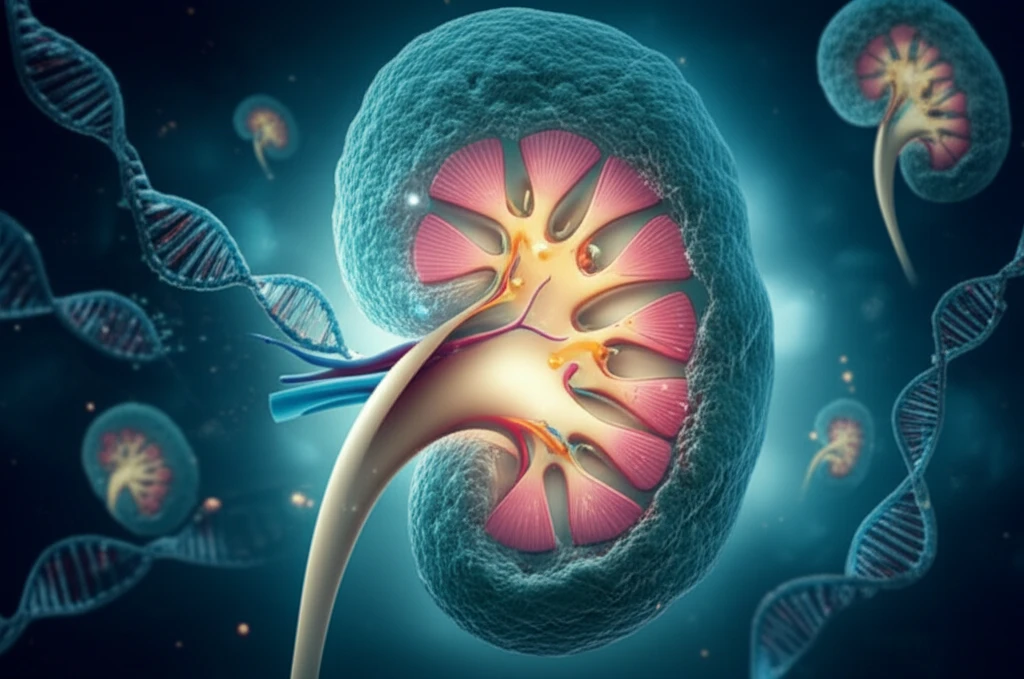
Unlocking the Secrets of Kidney Cancer: How MicroRNAs Could Revolutionize Diagnosis and Treatment
"New research sheds light on the critical role of microRNAs in clear cell renal cell carcinoma (ccRCC), offering hope for improved detection and targeted therapies."
Clear cell renal cell carcinoma (ccRCC), a common type of kidney cancer in adults, poses a significant challenge due to its often late detection and potential for metastasis. Traditional diagnostic methods sometimes fall short, leading researchers to explore innovative approaches for early and accurate diagnosis. The quest for more effective treatments has led scientists to delve into the complex molecular mechanisms that drive ccRCC development and progression.
MicroRNAs (miRNAs) are emerging as key players in this arena. These small, non-coding RNA molecules regulate gene expression and influence various biological processes, including angiogenesis (the formation of new blood vessels) and tumor growth. By understanding how miRNAs behave in ccRCC, researchers hope to unlock new avenues for early detection, personalized treatment, and improved patient outcomes.
This article explores recent research investigating the role of specific miRNAs and their target genes in ccRCC. The study analyzes the expression levels of several miRNAs and genes related to angiogenesis, aiming to identify potential biomarkers and therapeutic targets for this challenging disease.
Decoding the Role of MicroRNAs in Kidney Cancer

The study meticulously analyzed tissue samples from 56 patients diagnosed with ccRCC. Researchers used quantitative real-time PCR (qRT-PCR) to measure the expression levels of selected miRNAs and their corresponding target genes, which play crucial roles in angiogenesis. These included miR-99a, miR-99b, miR-100, miR-199a, miR-106a, miR-106b, miR-29a, miR-29b, miR-29c, miR-126, miR-200a, and miR-200b, along with their respective target genes like mTOR, HIF1-a, VHL, PDGF, VEGF, VEGFR1, and VEGFR2.
- miR-99a: Often overexpressed, leading to underexpression of its target gene, mTOR.
- miR-106a and miR-106b: Also overexpressed, resulting in underexpression of their target gene, VHL.
- miR-200b: Increased expression correlated with high-risk tumors.
- miR-126: Overexpression associated with low Fuhrman grade (less aggressive tumors).
The Future of Kidney Cancer Treatment: MicroRNAs as Therapeutic Targets
This research underscores the potential of miRNAs as both diagnostic biomarkers and therapeutic targets for ccRCC. The identification of specific miRNAs associated with tumor aggressiveness and prognosis opens doors for developing novel diagnostic tools that can detect ccRCC early and predict its likely course. Furthermore, the ability to manipulate miRNA expression could lead to targeted therapies that disrupt the molecular pathways driving tumor growth and angiogenesis. Further research is needed to validate these findings and translate them into clinical applications, but the promise of miRNAs in revolutionizing kidney cancer treatment is undeniable. As we continue to unravel the complex roles of these tiny molecules, we move closer to a future where kidney cancer can be diagnosed earlier, treated more effectively, and ultimately, conquered.
